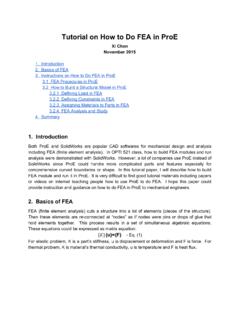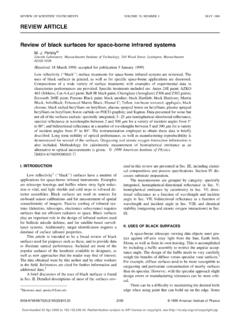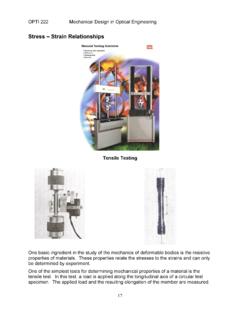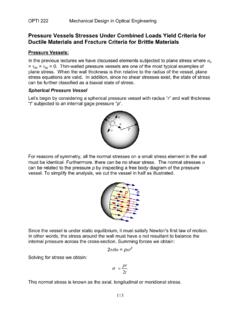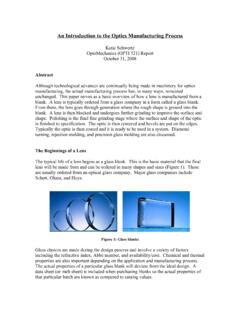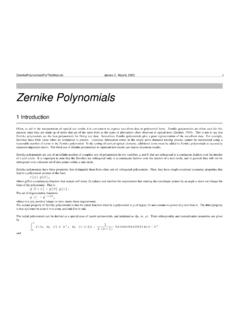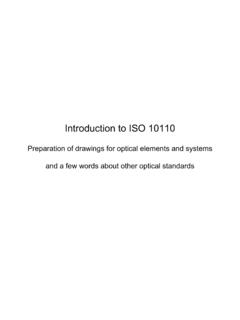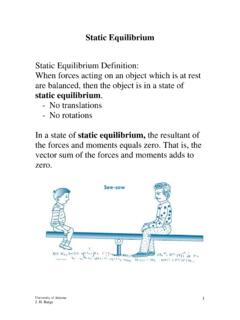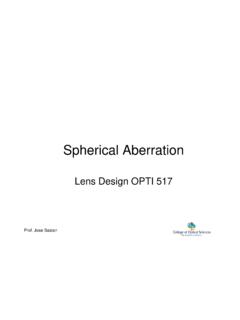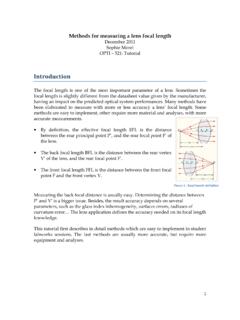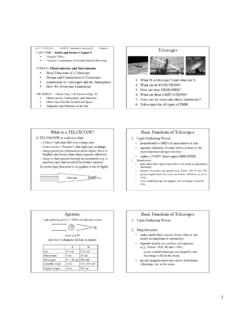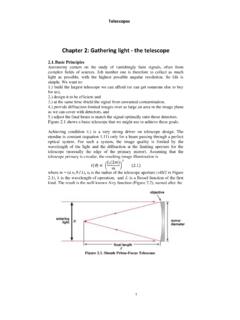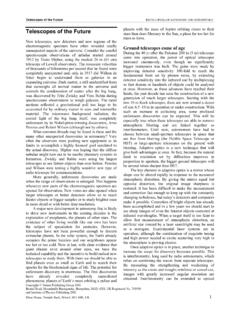Transcription of Lab 10: Refracting Telescopes - wp.optics.arizona.edu
1 OPTI 202L - GEOMETRICAL AND INSTRUMENTAL OPTICS LAB 4- 1 LAB 4: AFOCAL SYSTEMS Refracting Telescopes History: (from Hecht and Zajac, Optics, 1976, p. 151-155) It is not at all clear who actually invented the telescope . In point of fact, it was probably invented and reinvented many times. Do recall that by the seventeenth century spectacle lenses had been in use in Europe for about three hundred years. During that long span of time, the fortuitous juxtapositioning of two appropriate lenses to form a telescope seems almost unavoidable.
2 In any event, it is most likely that a Dutch optician, possibly even the ubiquitous Zacharias Jenssen of microscope fame, first constructed a telescope and in addition had inklings of the value of what he was peering into. The earliest indisputable evidence of the discovery, however, dates to October 2, 1608 when Hans Lippershey petitioned the States-General of Holland for a patent on a device for seeing at a distance (which is what teleskopos means in Greek).
3 Incidentally, as you might have guessed, its military possibilities were immediately recognized. His patent was therefore not granted; instead the government purchased the rights to the instrument and he received a commission to continue research. Galileo heard of this work and by 1609 he had fashioned a telescope of his own using two lenses and an organ pipe as a tube. It was not long before he constructed a number of greatly improved instruments and began to astound the world with the forthcoming astronomical discoveries for which he is so justly famous.
4 For a wonderful history of the telescope , including an image of the first-known sketch of a telescope , point your Internet web browser to: A great collection of photos of antique Telescopes may be found at: Theory: A telescope is used to image and magnify a distant object. In its simplest form, a telescope consists of 2 optical elements an objective and an eyepiece separated by the sum of their focal lengths. These may be either refractive or reflective elements (lenses or mirrors, respectively).
5 While the objective always has positive power, the eyepiece may have either positive or negative power. If the eyepiece has positive power, the telescope is a Keplerian or Astronomical telescope , shown in Fig. (a). If the eyepiece has negative power, the telescope is a Galilean telescope , shown in Fig. (b). Note that in both cases the distance between the two elements is equal to the sum of the focal lengths of the elements (positive or negative signs taken into account).
6 For this lab, we will consider objects to be near or at infinity, so that the rays in object space are parallel. The concept of infinity does not strictly mean the object is at an infinite distance, as is essentially the case when looking at astronomical objects. Rather, OPTI 202L - GEOMETRICAL AND INSTRUMENTAL OPTICS LAB 4- 2 an infinite object distance is one for which the object distance z is much greater than z' in the imaging equation: 1 11'fzz= ( ) In this case, the object distance z may be ignored and the equation reduces to: f1 1'z ( ) which says that z f.
7 In other words, an image is located at the rear focal point, F*, of the objective. This intermediate image in turn becomes the object for the eyepiece. Because this intermediate image is, in turn, located at the front focal point, F, of the eyepiece, the eyepiece forms the final image at infinity. Stated another way, the rays leave the eyepiece parallel, just like the rays in the original object space. The relaxed eye can then bring these parallel rays to focus on the retina.
8 In actual Telescopes , this is done by moving ( focusing ) the eyepiece with a mechanical stage until the front focal point F coincides with the intermediate image. An optical system for which the rays in object and image space are parallel, or equivalently a system for which the object is at - and the image at + (infinite conjugates) is termed an afocal system. Afocal literally means without a focal length. The Telescopes you will build in this lab are all afocal systems.
9 The following theory applies for afocal Telescopes . MAGNIFICATION The magnification of a telescope (afocal optical system) is described in terms of the angular magnification M , also called the magnifying power Mp. The angular magnification is defined as the ratio of the angular size of the image subtended at the eye (seen through the telescope ) to the angular size of the object subtended at the eye (seen without the telescope ). Stated another way, the angular magnification is the ratio of the apparent size of the image seen looking through the telescope to the apparent size of the object seen with the unaided eye.
10 For an object at infinity, the angular size of the object subtended at the eye is essentially the same as the angular size of the object subtended at the aperture stop of the telescope (the objective). It is the angular subtense at the objective that will be used for the derivation of angular magnification. Figures and show the marginal rays (MR) and chief rays (CR) for Keplerian and Galilean Telescopes , respectively. By definition, the angular magnification OPTI 202L - GEOMETRICAL AND INSTRUMENTAL OPTICS LAB 4- 3 M is given as the ratio of the chief ray angle in image space to the chief ray angle in object space: u'uM= ( ) While this is fine as a definition, it does not lend itself well as a working definition of angular magnification.
